Where is a 10×15 canopy used?
1.What is the best material for a 10×15 sun shade?
The choice of material for a 10×15 sun shade depends on various factors such as intended use, durability, and the level of protection needed. Here are some common materials used for sun shades, each with its own characteristics:
- Polyester Fabric:
- Pros: Lightweight, affordable, and resistant to mildew and UV rays. Some polyester fabrics are treated for enhanced UV protection.
- Cons: May not be as durable as some other materials.
- Polyethylene (HDPE) Fabric:
- Pros: High-density polyethylene provides excellent UV resistance and durability. It is breathable, reducing heat buildup underneath.
- Cons: May not be as aesthetically pleasing as some other materials.
- Acrylic Fabric:
- Pros: Known for its vibrant colors and aesthetic appeal. Offers good UV resistance and is water-resistant.
- Cons: Typically more expensive than polyester or polyethylene.
- Vinyl-Coated Polyester:
- Pros: Combines the strength of polyester with vinyl coating for enhanced durability and water resistance.
- Cons: May be heavier and less breathable than some other materials.
- Sunbrella Fabric:
- Pros: High-quality acrylic fabric known for its durability, fade resistance, and wide range of colors.
- Cons: Relatively higher cost compared to some other materials.
- PVC Mesh Fabric:
- Pros: Provides shade while allowing air circulation. Offers durability and resistance to UV rays.
- Cons: May not provide complete waterproofing.
- Aluminet Fabric:
- Pros: Reflective aluminized fabric that provides shade and reflects sunlight, reducing heat buildup.
- Cons: Typically used in specialized applications and may have a distinct appearance.
- Knitted Shade Cloth:
- Pros: Made from high-density polyethylene. Provides shade and UV protection while allowing air circulation.
- Cons: May not be completely waterproof.
- Canvas Fabric:
- Pros: Natural and breathable. Provides good UV resistance and can be treated for water repellency.
- Cons: Requires maintenance, and untreated canvas may not be water-resistant.
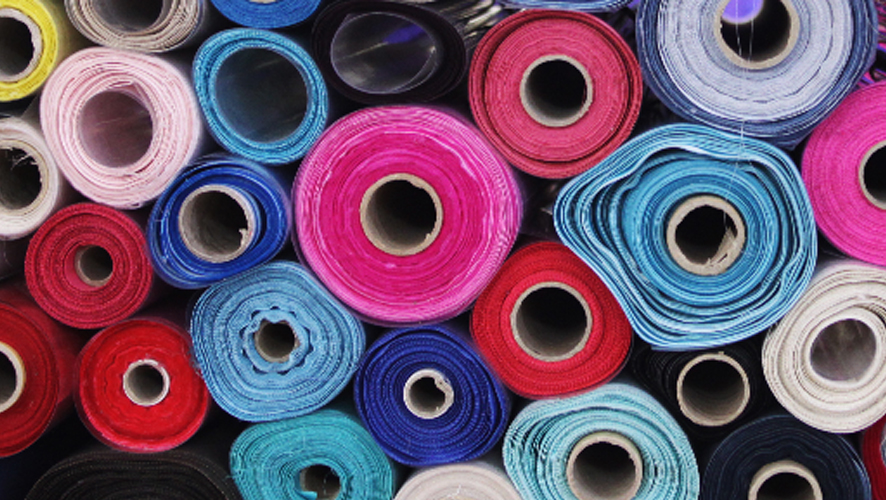
2.Where is User 10×15 pop up canopy with sidewalls used for?
- Outdoor Events:
- Trade Shows: Provides a designated space for businesses to showcase products and services at outdoor trade shows.
- Exhibitions: Used for displaying artwork, crafts, or informational exhibits at outdoor exhibitions.
- Vendor Booths:
- Markets and Fairs: Ideal for vendors selling goods at outdoor markets, fairs, or festivals.
- Food Booths: Used for outdoor food vendors providing shade and shelter for food preparation and service.
- Corporate Events:
- Company Picnics: Creates a shaded area for employees during company picnics or outdoor events.
- Outdoor Meetings: Provides a sheltered space for outdoor corporate meetings or team-building activities.
- Parties and Celebrations:
- Backyard Parties: Offers shade for outdoor gatherings, birthday parties, or family events in residential settings.
- Weddings: Used for outdoor wedding receptions, providing shelter for guests, catering, and other activities.
- Sports and Recreation:
- Sporting Events: Provides shade for spectators or participants at outdoor sporting events.
- Camping: Used as a sheltered area for camping trips, providing protection from the sun and light rain.
- Construction Sites:
- Worksite Shelter: Offers a shaded area for construction workers during breaks or for equipment storage.
- Emergency Response:
- Disaster Relief: Deployed as temporary shelters for emergency response teams or displaced individuals during disasters.
- Retail and Promotions:
- Product Promotions: Used for outdoor promotional events, allowing companies to engage with customers.
- Retail Pop-Ups: Creates a temporary retail space for sales or product showcases at outdoor locations.
- Educational Institutions:
- School Events: Provides shade for outdoor school events, fundraisers, or fairs.
- Graduation Ceremonies: Used for outdoor graduation ceremonies, offering shade for attendees.
- Recreational Activities:
- Picnic Areas: Creates shaded picnic areas in parks or recreational spaces.
- Beach Events: Provides shelter at beach gatherings or events.
- Health and Wellness:
- Outdoor Clinics: Used as a temporary medical or wellness clinic at outdoor locations.
- Health Fairs: Provides shelter for health-related events and screenings.
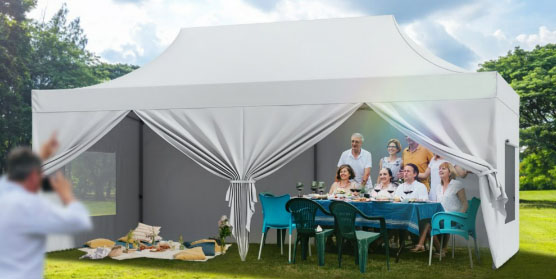
3.How big is 10×15 flag?
4.What is the 10×15 custom canopy ?
A “10×15 custom canopy” typically refers to a pop-up canopy tent with custom specifications, particularly in terms of size and design. Here’s a breakdown of the components of the term:
- 10×15: This denotes the size of the canopy in feet. In this case, it suggests that the canopy has a footprint of 10 feet by 15 feet.
- Custom Canopy: “Custom” implies that the canopy is designed or customized according to specific requirements. This can include custom branding, logos, colors, and other design elements tailored to the customer’s preferences.
Pop-up canopies are portable shelters that are easy to set up and take down. They are commonly used for outdoor events, trade shows, fairs, markets, and various other occasions where temporary shelter or branding is needed. The customization aspect allows businesses, organizations, or individuals to personalize the canopy to align with their brand or event theme.
If you are interested in a 10×15 custom canopy, you would typically work with a supplier or manufacturer who offers customization services. This may involve selecting the size, frame type, fabric color, and adding custom graphics or branding elements to make the canopy uniquely yours.
5.Where is User 10×15 canopy used for?
A “10×15 canopy” is a portable and versatile shelter that can be used in various settings for different purposes. Here are some common uses for a 10×15 canopy:
- Outdoor Events: Canopies are often used at outdoor events such as fairs, festivals, markets, and concerts to provide shade and shelter for vendors, participants, or attendees.
- Trade Shows: Businesses often use canopies at trade shows to create a branded and easily recognizable space for their products or services.
- Sporting Events: Canopies are used at sporting events, providing shade for spectators, teams, or event organizers. They can also serve as a base for first aid stations or promotional activities.
- Parties and Celebrations: Canopies can be set up for outdoor parties, weddings, or celebrations, offering protection from the sun or light rain.
- Picnics and Gatherings: Families and groups use canopies during picnics or gatherings in parks or other outdoor spaces to create a comfortable area for socializing.
- Commercial Use: Businesses might use canopies for promotional events, product launches, or outdoor sales. Custom branding and printing on the canopy can enhance visibility.
- Construction Sites: Canopies are utilized at construction sites to provide shelter for workers, equipment, or materials.
- Emergency Response: Canopies can be deployed in emergency situations to create temporary shelters for disaster relief, medical services, or coordination centers.
- Farmers’ Markets: Vendors at farmers’ markets often use canopies to create a shaded and protected space for selling produce, crafts, or other goods.
- Outdoor Retail: Retailers may use canopies for outdoor sales events, sidewalk sales, or promotions.
The versatility of a 10×15 canopy makes it a practical solution for a wide range of outdoor activities and events where temporary shelter and branding are required.
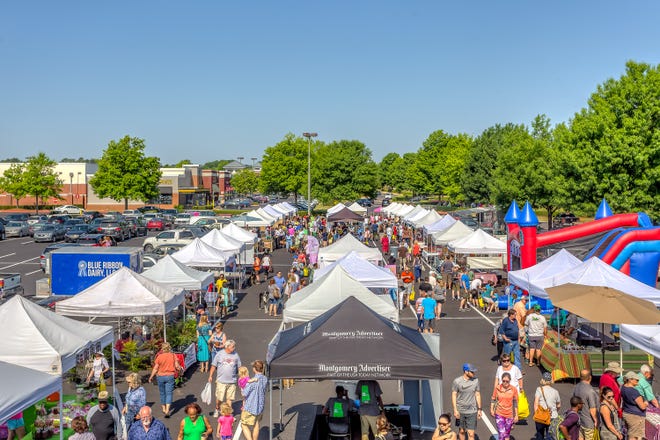
6.How to find 10×15 vendor tent?
To find a 10×15 vendor tent, you can follow these steps:
- Online Retailers:
- Explore popular online retail platforms such as Amazon, eBay, Walmart, and others. Use their search functions to find 10×15 vendor tents.
- Visit websites specializing in outdoor equipment and event supplies.
- Outdoor Supply Stores:
- Check with local outdoor supply stores, camping equipment stores, or event supply stores. They may carry a selection of vendor tents in different sizes.
- Specialty Canopy Suppliers:
- Look for specialty canopy suppliers or manufacturers that offer a variety of tents for vendors, trade shows, or outdoor events. They may provide customization options.
- Event Rental Companies:
- Contact local event rental companies. They may have vendor tents available for rent or sale.
- Trade Shows and Expos:
- Attend trade shows or expos related to outdoor equipment, events, or vendor supplies. You can often find vendors showcasing different types of tents.
- Read Reviews:
- Read customer reviews and ratings to get an idea of the quality and performance of different vendor tents.
- Local Retailers:
- Visit local retailers that specialize in outdoor equipment, camping gear, or event supplies. They may have vendor tents in stock.
- Ask for Recommendations:
- Ask for recommendations from other vendors or event organizers. They may have insights into where to find quality vendor tents.
- Check Classifieds:
- Explore online classified ads or local community marketplaces. Sometimes, individuals or businesses sell new or used vendor tents.
- Social Media Groups:
- Join relevant social media groups or forums where event organizers or vendors discuss their experiences and share recommendations for tents.
When searching for a 10×15 vendor tent, consider factors such as the tent’s durability, ease of setup, portability, and any additional features you may need. It’s also advisable to compare prices and check for any warranties or guarantees offered by the seller or manufacturer.
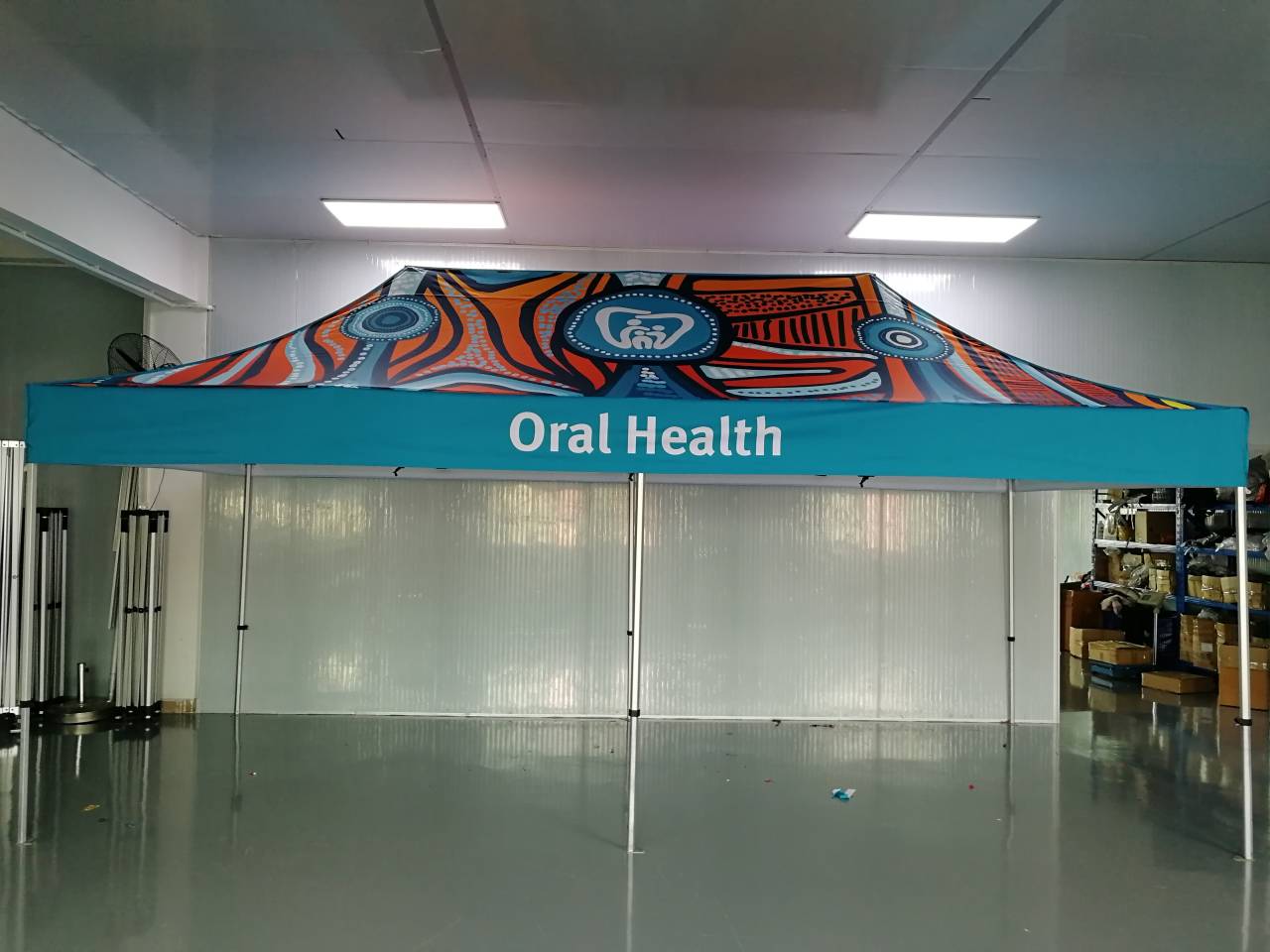
7.When searching for 10×15 trade show booth kit, consider the following:
When searching for a 10×15 trade show booth kit, it’s important to consider several factors to ensure that it meets your specific needs and provides a professional and effective display. Here are some key considerations:
- Size and Configuration:
- Verify that the booth kit is specifically designed for a 10×15-foot booth space. Ensure it includes all the necessary components for a complete setup.
- Modularity and Flexibility:
- Check if the booth kit offers modularity and flexibility. A modular design allows you to adapt the booth to different layouts and configurations, providing versatility for various trade show spaces.
- Material and Build Quality:
- Examine the material and build quality of the components, including the frame, graphics, and accessories. Sturdy and durable materials contribute to the longevity of the booth.
- Graphics and Branding:
- Evaluate the options for custom graphics and branding. High-quality, visually appealing graphics are crucial for attracting attention and conveying your brand message effectively.
- Ease of Assembly:
- Look for a booth kit that is easy to assemble and disassemble. Quick and hassle-free setup is essential for efficient use of time during the trade show.
- Portability and Transportation:
- Consider the portability of the booth kit. Ideally, it should be lightweight and easy to transport. Check if it comes with a carrying case or transport bag for convenient mobility.
- Lighting Options:
- Assess the availability of lighting options. Adequate lighting enhances the visibility of your booth and draws attention to key elements. Some booth kits may include built-in or attachable lighting solutions.
- Accessories and Add-ons:
- Explore additional accessories and add-ons that complement the booth kit. This could include shelves, literature racks, monitor mounts, or other features that enhance functionality.
- Cost and Budget:
- Determine the overall cost of the booth kit and ensure that it fits within your budget. Consider any additional costs for customization, shipping, or storage.
- Customer Reviews:
- Read customer reviews and testimonials about the specific booth kit you are considering. Feedback from other users can provide insights into the kit’s performance and reliability.
- Warranty and Support:
- Check if the booth kit comes with a warranty or guarantee. Additionally, inquire about the level of customer support provided by the manufacturer or seller.
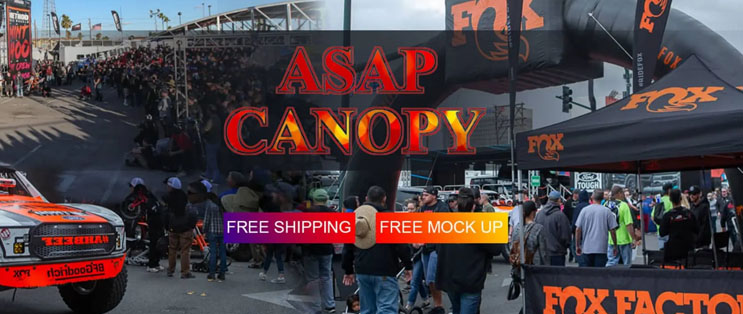
8.When custom 10×15 tent with logo, consider:
When customizing a 10×15 tent with a logo, there are several important considerations to ensure that the final product meets your branding and marketing goals. Here are key factors to consider:
- Logo Placement:
- Determine the optimal placement of your logo on the tent. Common locations include the canopy, valances, sidewalls, or peak. Consider the visibility and impact of the logo in different positions.
- Size of the Logo:
- Choose an appropriate size for your logo. It should be large enough to be visible from a distance, ensuring that your brand is easily recognizable. Avoid making the logo too small, as it may lose impact.
- Color Selection:
- Ensure that the colors of your logo align with your brand guidelines. Consider the background color of the tent and choose contrasting colors to make the logo stand out. High-quality printing ensures accurate color reproduction.
- Graphic Quality:
- Use high-resolution graphics for your logo to maintain clarity and sharpness when printed on the tent. Low-resolution images may result in pixelation and reduced visual appeal.
- Customization Options:
- Explore customization options for the entire tent, including canopy, sidewalls, and valances. Some manufacturers offer full-color, dye-sublimated printing that allows for intricate designs and vibrant colors.
- Material Selection:
- Choose a tent material that complements your logo design. The material should be suitable for outdoor use, durable, and resistant to fading. Common materials include polyester or vinyl.
- Printing Method:
- Understand the printing method used for customization. Dye-sublimation printing is a popular choice for vibrant and durable graphics. UV printing is another option that provides excellent color reproduction.
- Single or Double-Sided Printing:
- Decide whether you want the logo printed on one side or both sides of the tent. Double-sided printing ensures visibility from various angles and can be advantageous in outdoor events.
- Logo Design Consistency:
- Maintain consistency with your overall brand design. The customized tent should reflect your brand’s visual identity and seamlessly integrate with other marketing materials.
- Compliance with Event Guidelines:
- Check event guidelines and restrictions regarding branding and customization. Some events may have specific rules regarding the size and placement of logos on tents.
- Ease of Setup:
- Consider the ease of setup for the custom tent. Look for user-friendly designs that allow for quick installation, especially if you plan to set up the tent frequently.
- Budget Considerations:
- Determine your budget for customizing the tent and work within those constraints. Compare quotes from different manufacturers to find the best balance between quality and cost.

9.What are the 10×15 tent sidewalls benefits?
The addition of sidewalls to a 10×15 tent can offer several benefits, enhancing both the functionality and versatility of the tent for various purposes. Here are some key benefits of using sidewalls with a 10×15 tent:
- Weather Protection:
- Sidewalls provide additional protection against the elements, such as wind, rain, and sun. They create a barrier that helps keep the interior of the tent more sheltered, offering a comfortable space for occupants.
- Privacy:
- Sidewalls add a layer of privacy to the tent, making it suitable for applications where confidentiality or exclusivity is desired. This is particularly useful in event settings or as a changing area.
- Enhanced Branding:
- Customized sidewalls can be printed with branding, logos, or promotional messages, maximizing the visibility of your brand at events. This serves as an additional marketing space to attract attention.
- Temperature Control:
- Sidewalls can help regulate the temperature inside the tent by blocking wind and providing shade. This is beneficial for maintaining a comfortable environment during hot or cold weather conditions.
- Security and Enclosure:
- Sidewalls create a more enclosed and secure space. This is advantageous for merchandise booths, outdoor sales, or information centers where valuable items need protection.
- Versatility:
- The modular nature of sidewalls adds versatility to the tent. Depending on the event or purpose, you can choose to install all, some, or none of the sidewalls, adapting the tent to different situations.
- Bug and Insect Protection:
- Sidewalls act as a barrier against insects and bugs, creating a more pleasant environment for occupants. This is especially important for outdoor dining, product displays, or gatherings.
- Visual Appeal:
- Sidewalls contribute to the overall aesthetic appeal of the tent. They create a polished and finished look, making the tent more visually appealing and suitable for upscale events.
- Flexible Configurations:
- Depending on the type of sidewalls used (solid, clear, or mesh), you can create different configurations. For example, clear sidewalls provide visibility while keeping the elements out, while mesh sidewalls offer ventilation.
- Easy Installation:
- Many sidewalls are designed for easy installation and removal. This allows for quick adjustments based on changing weather conditions or the specific requirements of the event.
- Customization Options:
- Sidewalls can be customized to match the branding of the tent or convey specific messages. This customization enhances the overall cohesiveness of the setup.
- Concealed Storage:
- Closed sidewalls can be used to create concealed storage space within the tent, allowing you to store equipment, supplies, or merchandise out of sight.
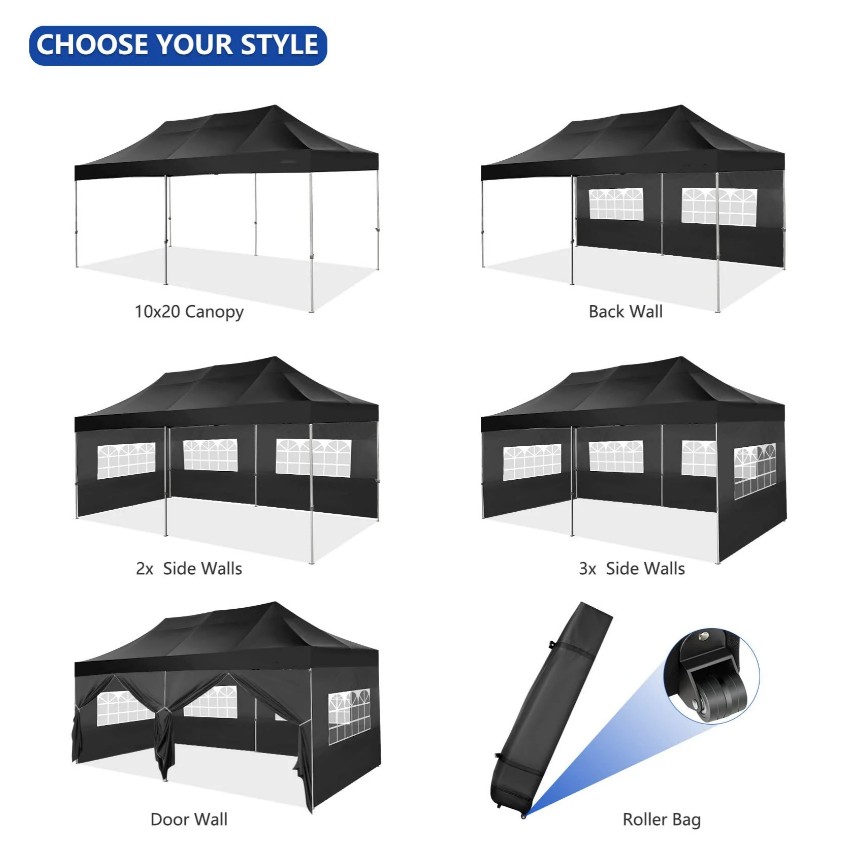
10.What does 10×15 tent layout need to consider?
When planning the layout for a 10×15 tent, several factors should be considered to optimize the use of space and create an inviting and functional environment. Here are key considerations for a 10×15 tent layout:
- Purpose of the Tent:
- Determine the primary purpose of the tent, whether it’s for product displays, information booths, promotional events, or other activities. This will guide the overall layout.
- Entrance and Exit Points:
- Plan clear entrance and exit points to facilitate the flow of foot traffic. Consider using open sides or doorways for easy access.
- Branding and Signage:
- Allocate space for branding and signage. Ensure that logos, banners, and promotional materials are strategically placed to maximize visibility.
- Product Display Areas:
- If the tent is used for showcasing products, plan designated areas for product displays. Use tables, shelves, or racks to present items effectively.
- Customer Interaction Zones:
- Create spaces within the tent where staff can interact with customers. This is especially important for sales, promotions, or informational booths.
- Seating Areas:
- If applicable, incorporate seating areas for visitors to relax or engage in conversations. Folding chairs or benches can be used to conserve space.
- Traffic Flow:
- Consider the flow of foot traffic to avoid congestion. Arrange displays and activities in a way that encourages a natural and organized movement of visitors.
- Lighting Placement:
- Ensure that lighting is strategically placed to highlight important areas, especially during evening events. This includes spotlights on products or specific displays.
- Electrical Outlets:
- If electronics or lighting fixtures require power, plan the layout to accommodate access to electrical outlets. Use extension cords safely to prevent tripping hazards.
- Storage Areas:
- Allocate space for storage or back-of-house activities. Conceal storage areas with screens or partitions to maintain a tidy appearance.
- Weather Considerations:
- If the event is outdoors, plan for weather conditions. Consider adding sidewalls for wind or rain protection or using canopies for shade.
- Aesthetic Appeal:
- Pay attention to the overall aesthetic of the tent. Choose colors, decorations, and layouts that align with the brand or theme of the event.
- Customer Interaction Points:
- Set up specific points for customer interaction, such as counters or demo areas. This helps guide visitors to engage with staff or products.
- Technology Integration:
- If using technology, plan for the placement of screens, tablets, or interactive displays. Ensure that power sources and wiring are discreetly managed.
- COVID-19 Safety Measures:
- Consider any necessary safety measures, such as social distancing markers, hand sanitizer stations, or barriers for customer and staff protection.
- Flexibility:
- Keep the layout flexible to adapt to different events or changing circumstances. Portable and modular elements allow for versatility.

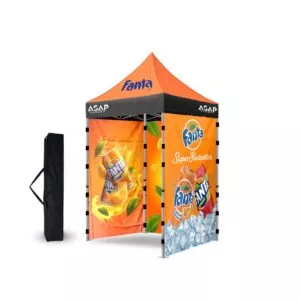
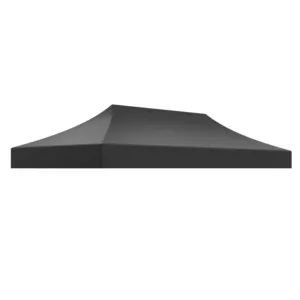
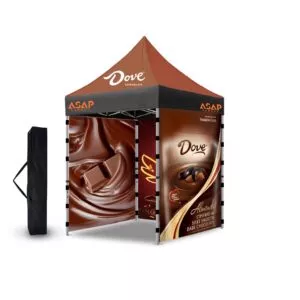
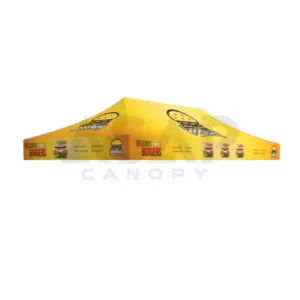
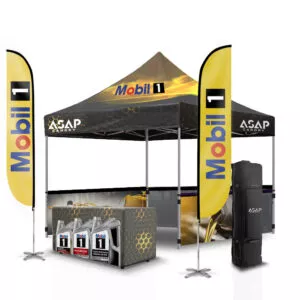
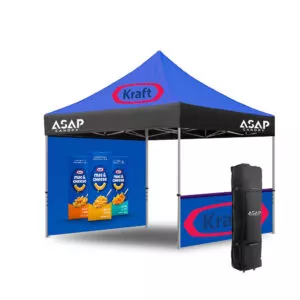
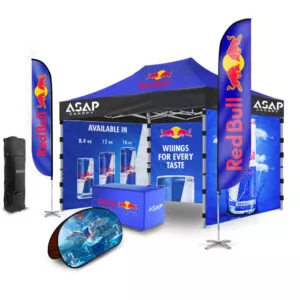
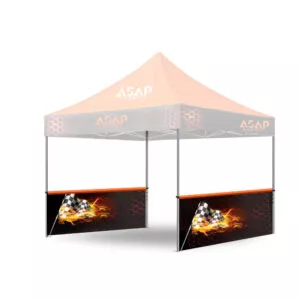
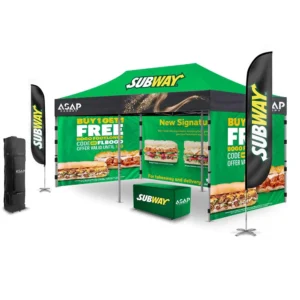
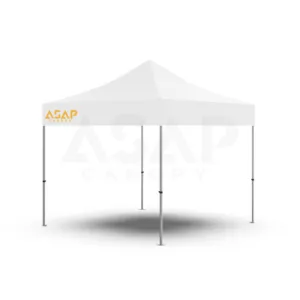
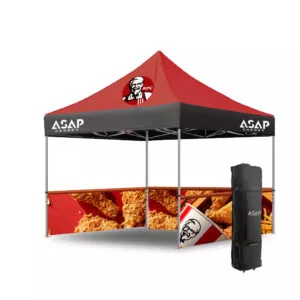
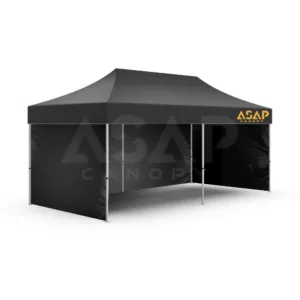
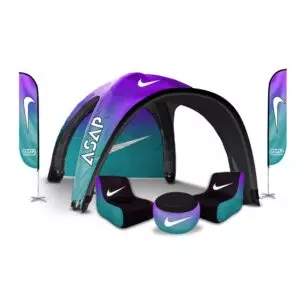
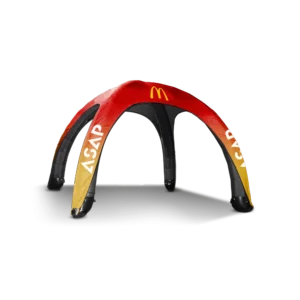
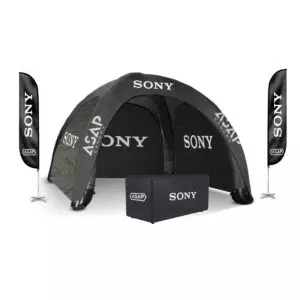
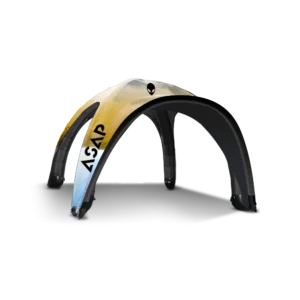
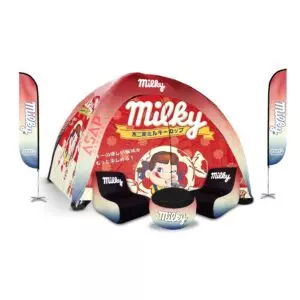
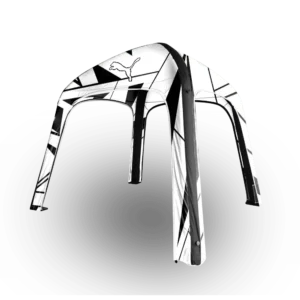
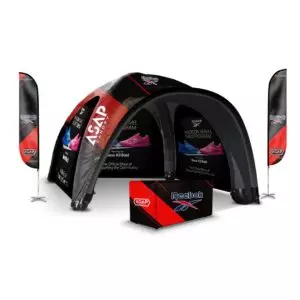
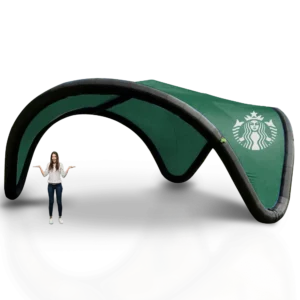
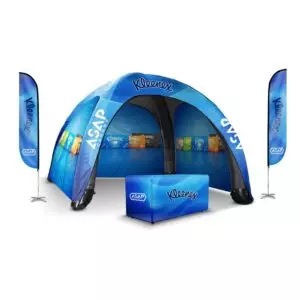
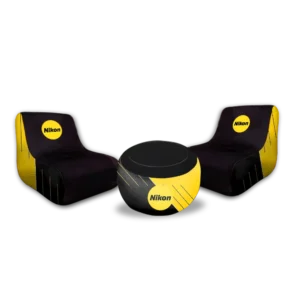
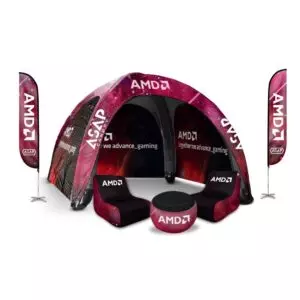
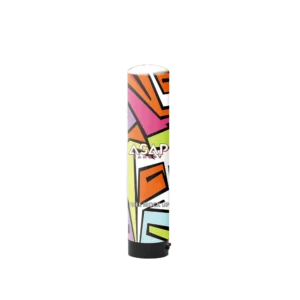
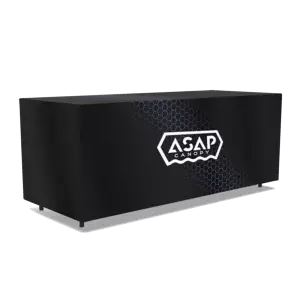
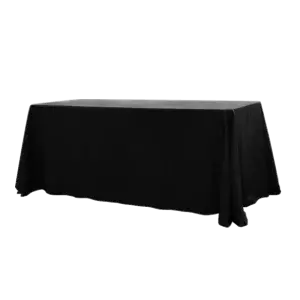
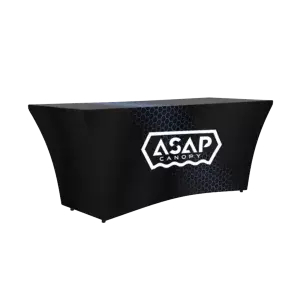
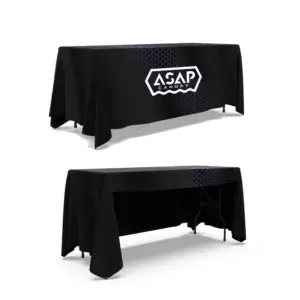
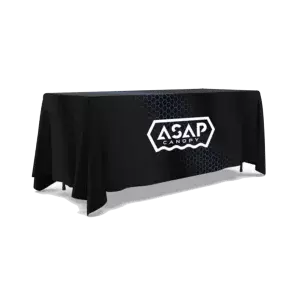
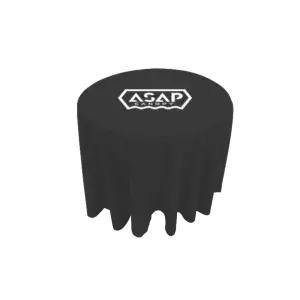
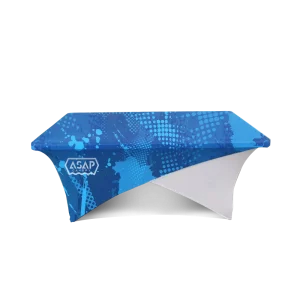
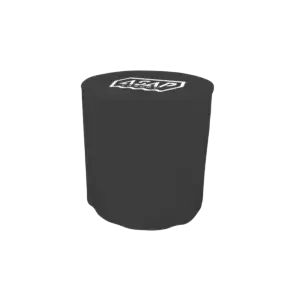
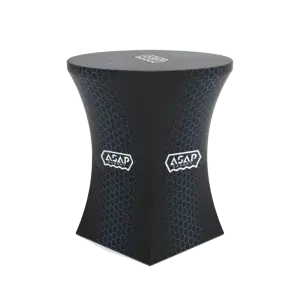
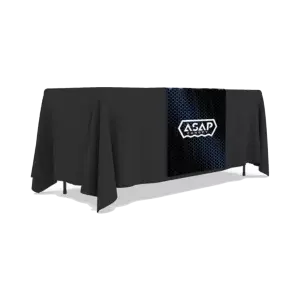
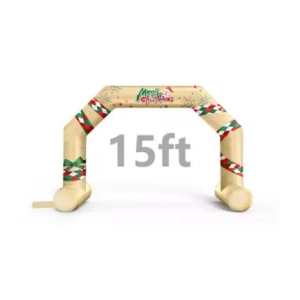
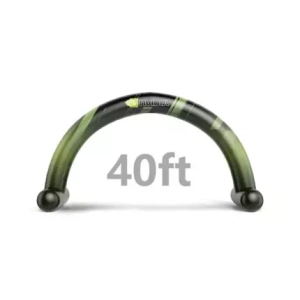
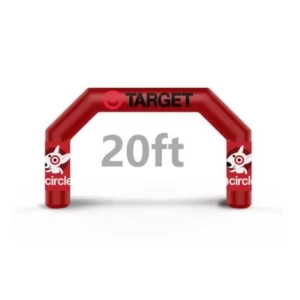
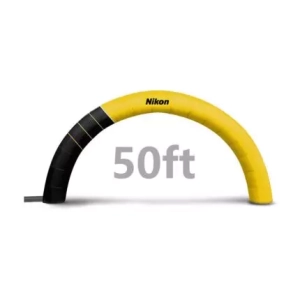
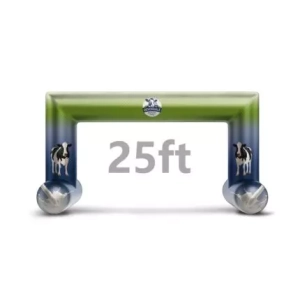
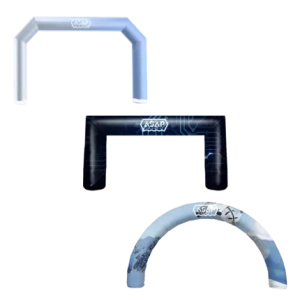
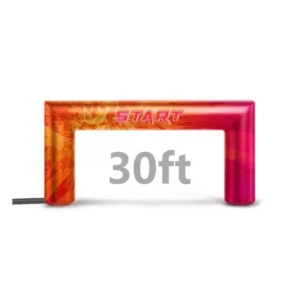
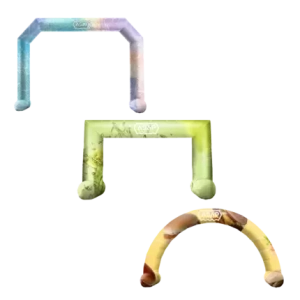

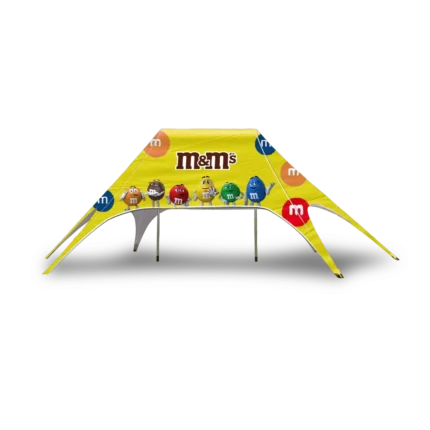
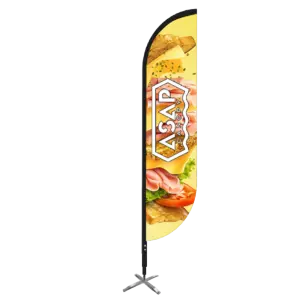
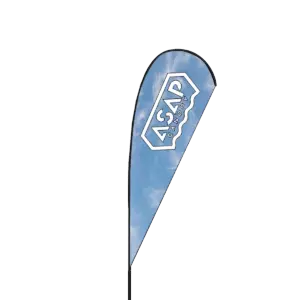
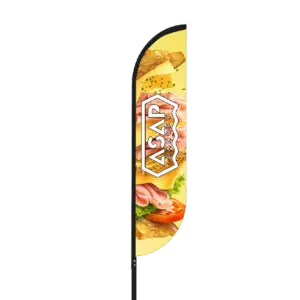
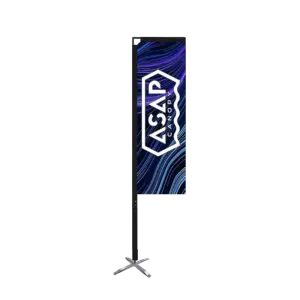
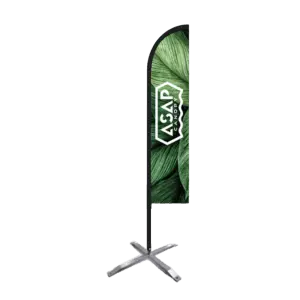
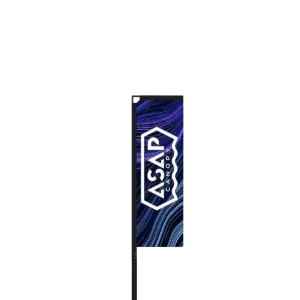
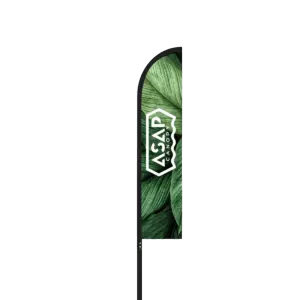
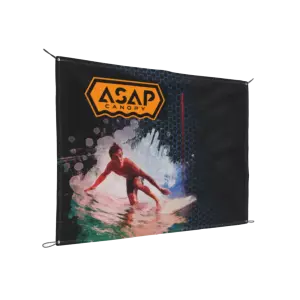
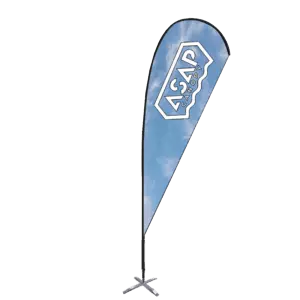
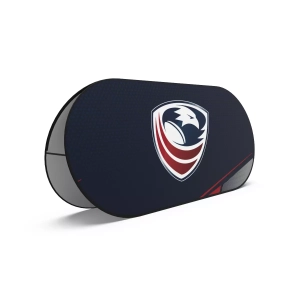
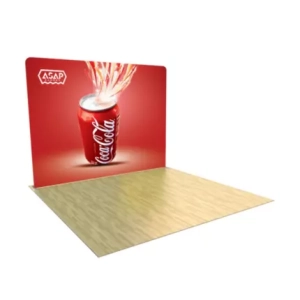
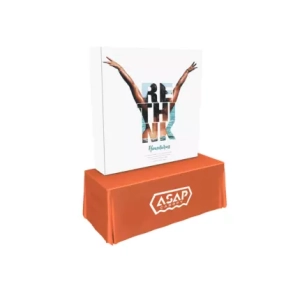
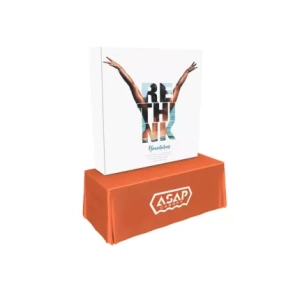
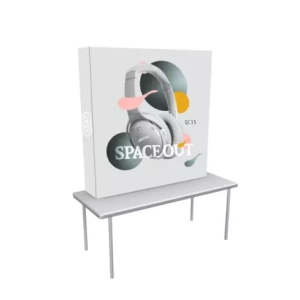
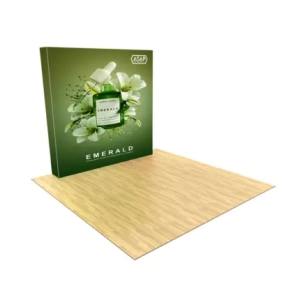
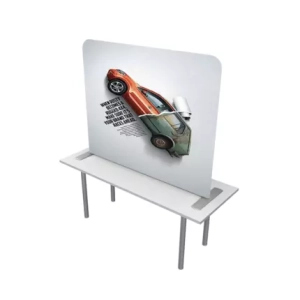
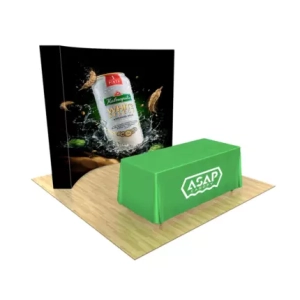
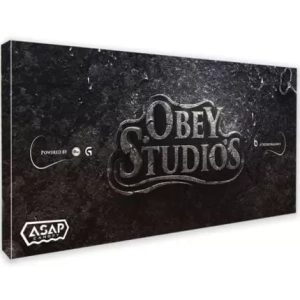
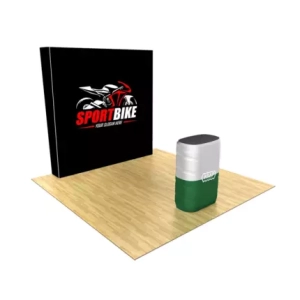
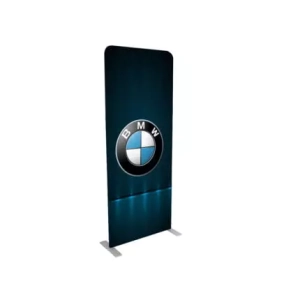
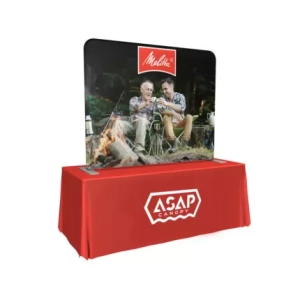
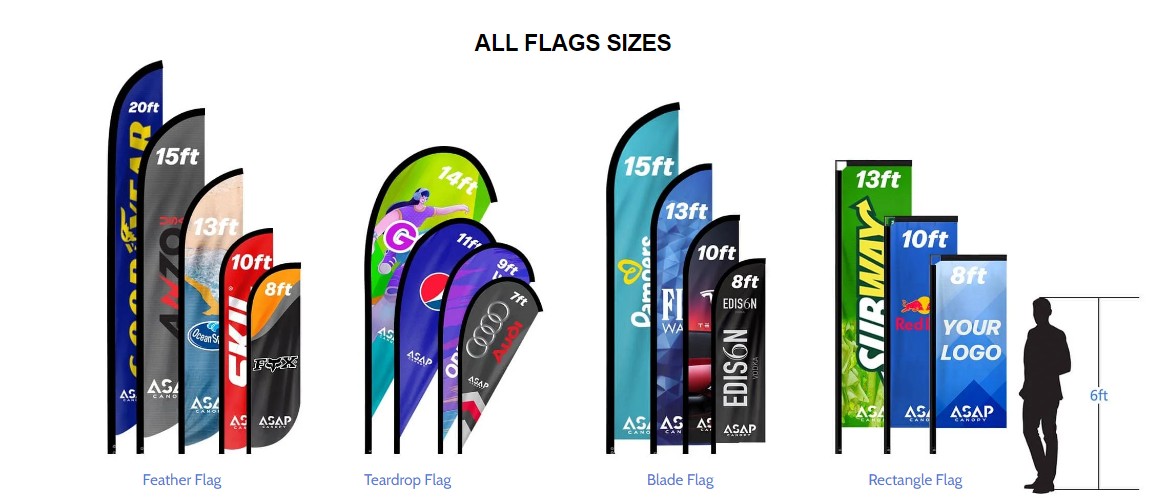
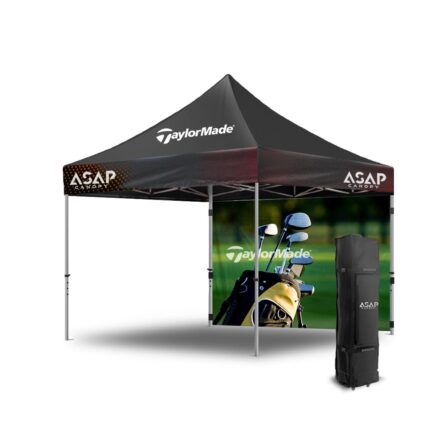
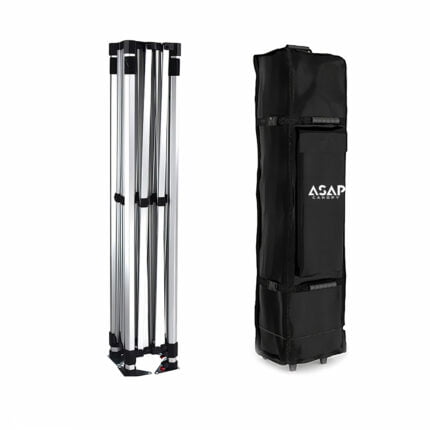

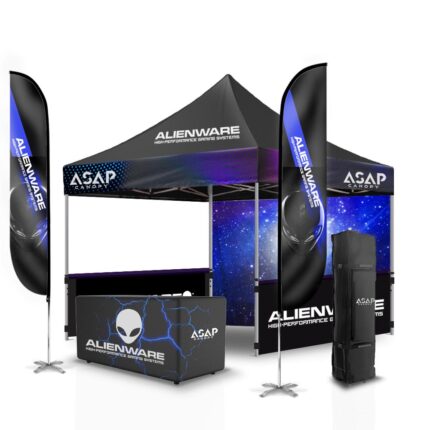
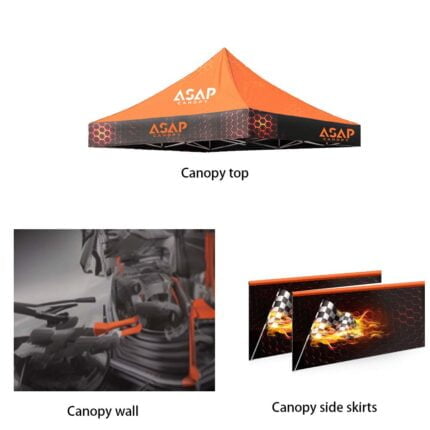
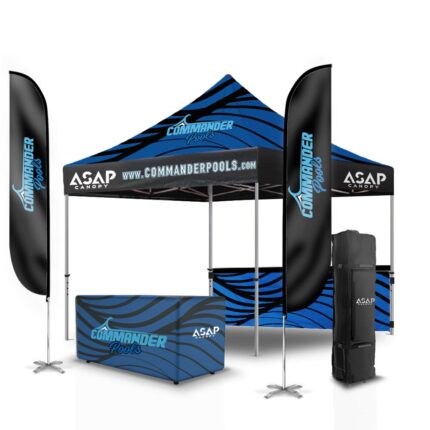
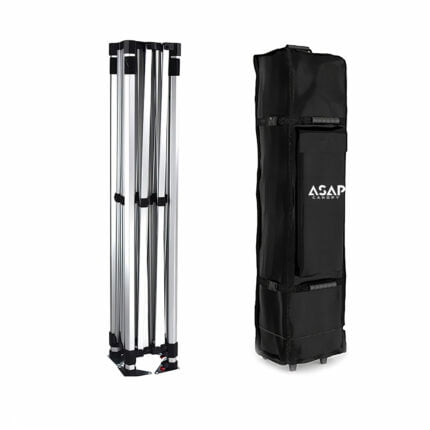
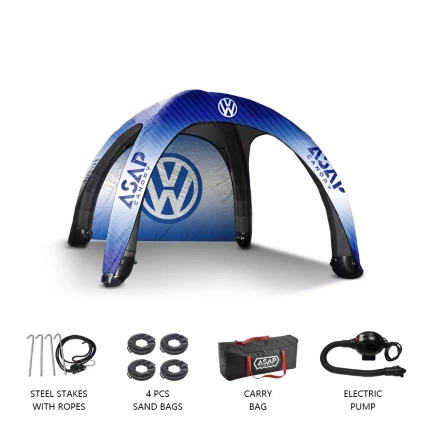
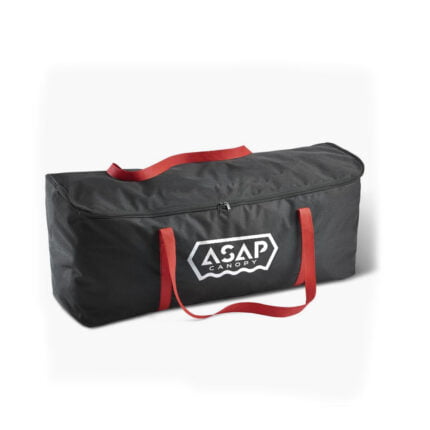
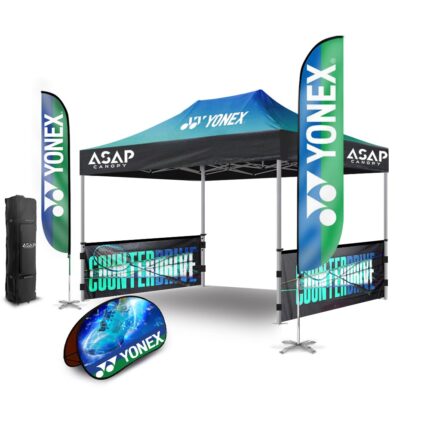
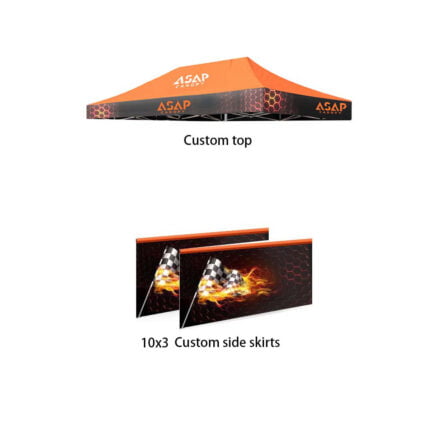
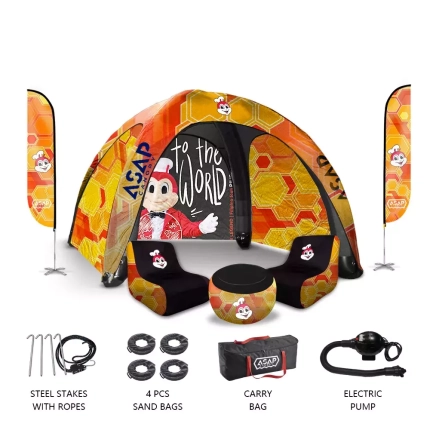
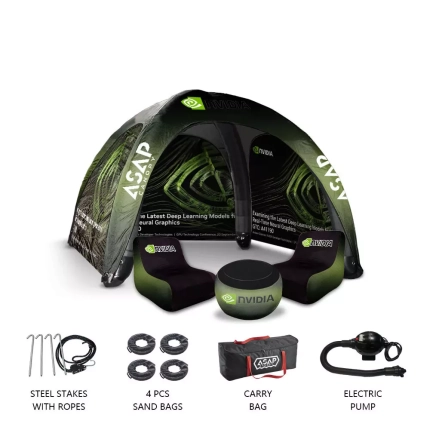

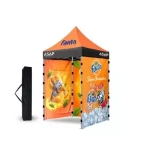 5×5 Pop Up Tent
5×5 Pop Up Tent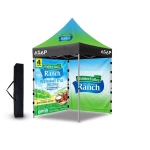 6.5×6.5 Pop Up Tent
6.5×6.5 Pop Up Tent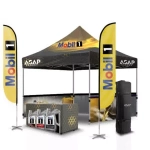 10×10 Canopy Tent
10×10 Canopy Tent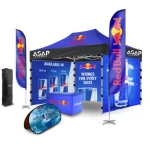 10×15 Canopy Tent
10×15 Canopy Tent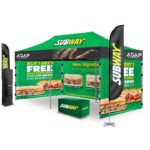 10×20 Canopy Tent
10×20 Canopy Tent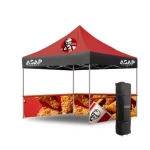 Canopy Options
Canopy Options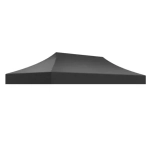 Blank Canopy Top
Blank Canopy Top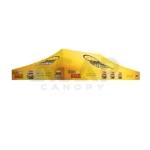 Canopy Top
Canopy Top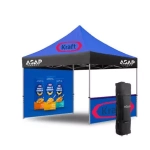 Canopy Walls
Canopy Walls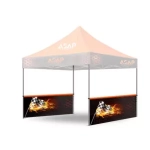 Canopy Side Skirt
Canopy Side Skirt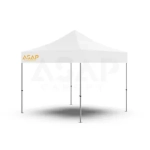 Blank Canopy
Blank Canopy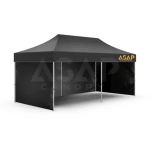 Blank Canopy Kit
Blank Canopy Kit
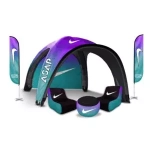 Inflatable Canopy Tents 10×10
Inflatable Canopy Tents 10×10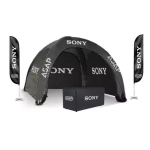 Inflatable Canopy Tents 13×13
Inflatable Canopy Tents 13×13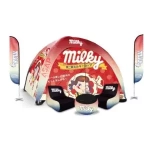 Inflatable Canopy Tents 16×16
Inflatable Canopy Tents 16×16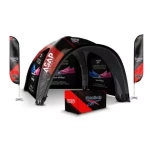 Inflatable Canopy Tents 20×20
Inflatable Canopy Tents 20×20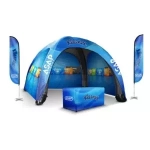 Inflatable Canopy Tents 23×23
Inflatable Canopy Tents 23×23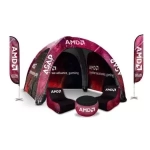 Inflatable Canopy Tents 26×26
Inflatable Canopy Tents 26×26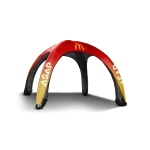 Inflatable Spider Tents
Inflatable Spider Tents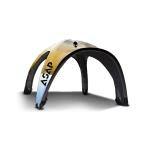 Inflatable Dome Tents
Inflatable Dome Tents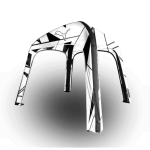 Inflatable Eclipse Tents
Inflatable Eclipse Tents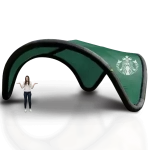 Inflatable Party Tent
Inflatable Party Tent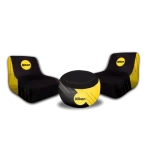 Inflatable Furniture
Inflatable Furniture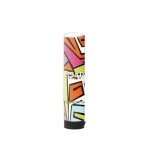 Inflatable Pillar
Inflatable Pillar
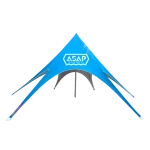 Single Pole Star Tents
Single Pole Star Tents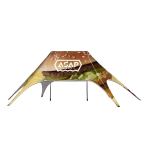 Double Pole Star Tents
Double Pole Star Tents
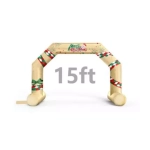 15FT Inflatable Arches
15FT Inflatable Arches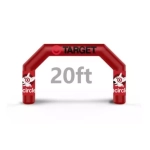 20FT Inflatable Arches
20FT Inflatable Arches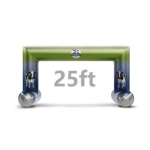 25FT Inflatable Arches
25FT Inflatable Arches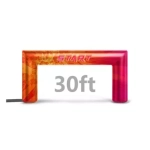 30FT Inflatable Arches
30FT Inflatable Arches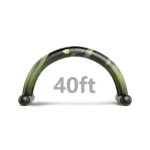 40FT Inflatable Arches
40FT Inflatable Arches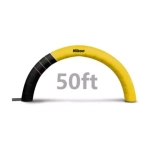 50FT Inflatable Arches
50FT Inflatable Arches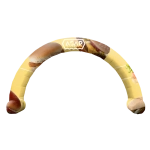 Custom Constant Arches
Custom Constant Arches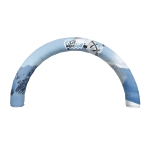 Custom Sealed Arches
Custom Sealed Arches
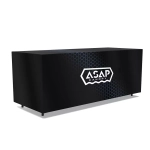 Fitted Table Covers
Fitted Table Covers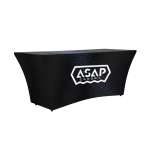 Stretch-Fit Table Covers
Stretch-Fit Table Covers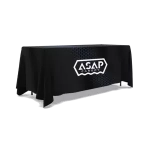 Loose Table Throws
Loose Table Throws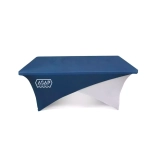 Cross-Over Stretch-Fit Table Cover
Cross-Over Stretch-Fit Table Cover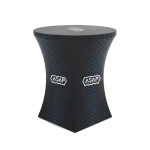 Round Stretch-Fit Table Cover
Round Stretch-Fit Table Cover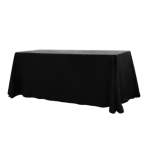 Blank Table Throws
Blank Table Throws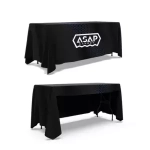 3-Sided Loose Table Throw
3-Sided Loose Table Throw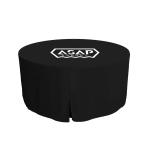 Round Fitted Table Covers
Round Fitted Table Covers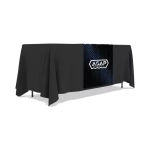 Table Runners
Table Runners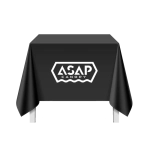 Square Table Covers
Square Table Covers
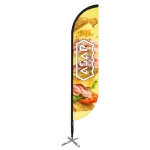 Feather Flags
Feather Flags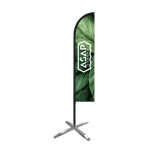 Blade Flags
Blade Flags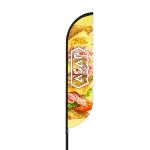 Feather Banner
Feather Banner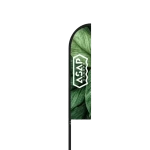 Blade Banner
Blade Banner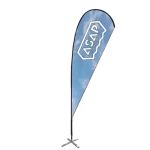 Teardrop Flags
Teardrop Flags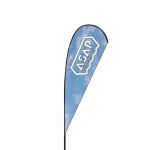 Teardrop Banner
Teardrop Banner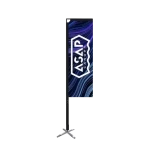 Rectangle Flags
Rectangle Flags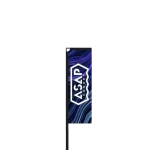 Rectangle Banner
Rectangle Banner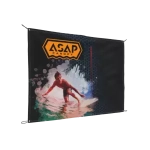 Mesh Event Banners
Mesh Event Banners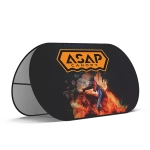 Pop Out Banner Horizontal
Pop Out Banner Horizontal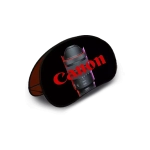 Pop-Out Banner Vertical
Pop-Out Banner Vertical
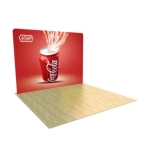 Trade Show Display
Trade Show Display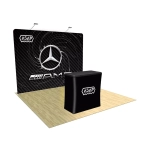 Trade Show Display Kit
Trade Show Display Kit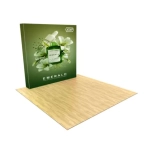 Pop Up Trade Show Display
Pop Up Trade Show Display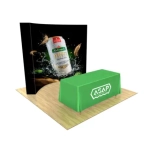 Pop Up Trade Show Display Deluxe Kit
Pop Up Trade Show Display Deluxe Kit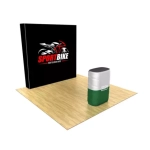 Pop Up Trade Show Display Kit
Pop Up Trade Show Display Kit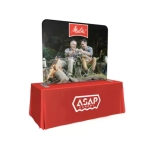 TableTop Displays Kit
TableTop Displays Kit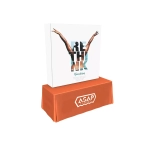 Pop Up Tabletop Display Kit
Pop Up Tabletop Display Kit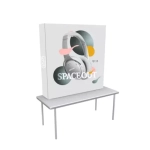 Pop Up Tabletop Display
Pop Up Tabletop Display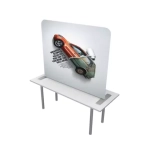 Tabletop Display
Tabletop Display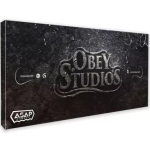 Straight Trade Show Exhibit Booth
Straight Trade Show Exhibit Booth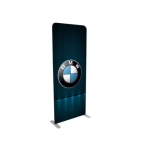 Banner Stand
Banner Stand
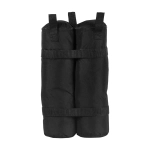 Tent Accessories
Tent Accessories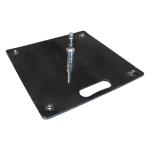 Flag Accessories
Flag Accessories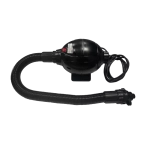 Arch Accessories
Arch Accessories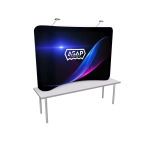 Trade Show Accessories
Trade Show Accessories
